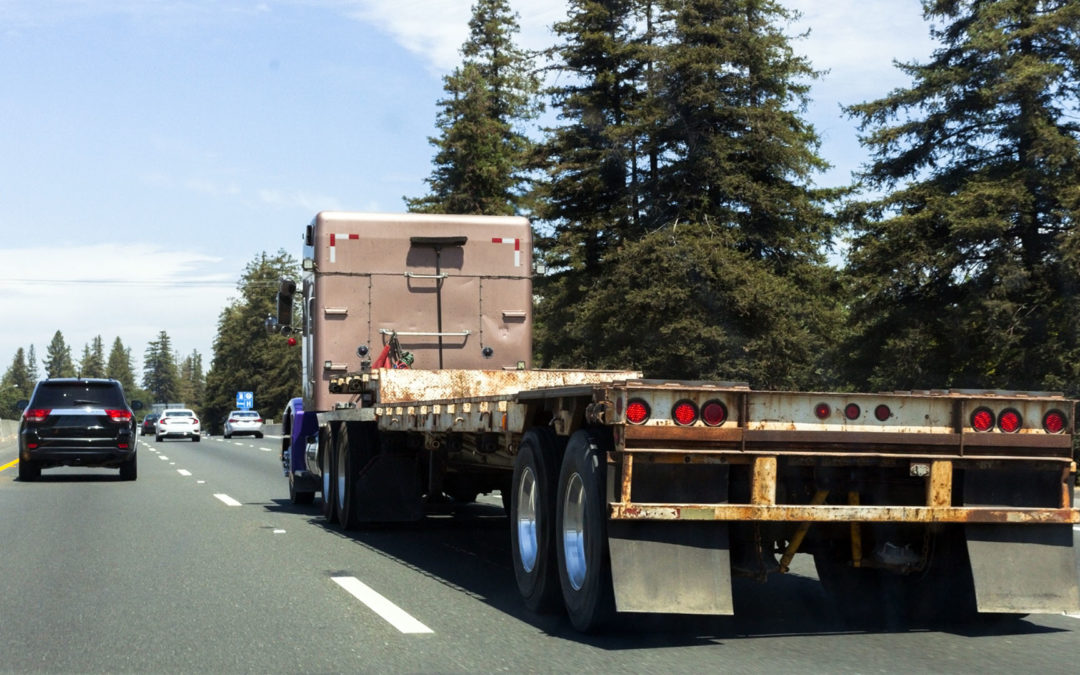Using technology and some innovative thinking, companies and carriers can help reduce the number of empty miles driven on US highways every day.
The environmental impacts of transportation have been well documented, and include the 29% of total US greenhouse gases (GHGs) emitted into the atmosphere on an annual basis. According to the EPA, cars, trucks, commercial aircraft and railroads, among other sources, cumulatively contribute to these transportation end-use sector emissions. By comparison, the next two contributors on the list are the electricity sector (at 25%) and industrial sector (23%).
As vehicle manufacturers, carriers and shippers seek out ways to operate in a more environmentally-sustainable manner, transportation remains a key focus for many of them. Answering customers’ calls for partners and suppliers that factor sustainability into their business models, companies are getting innovative on the transportation front.
Along with increasing the efficiency of vehicle technology and using lower-carbon fuels, in some cases making changes to how goods are transported can help lower transportations’ overall GHG emissions. “America has a history of accomplishing large-scale changes in our transportation system, the EPA reports.
Between 1900 and 1920, for example, it says cars overtook horses as the primary mode of personal transportation. The entire U.S. interstate highway system was built in just 35 years, and was transformational in its effects. “Cargo, which was at one time always loaded and unloaded by hand in a wide range of shapes and sizes,” the EPA adds, “is now frequently shipped in uniform containers that dramatically reduce shipping costs; this change was accomplished in 30 years.”
Eliminating Empty Miles
In Eliminating empty miles best way to effect immediate climate change, FreightWaves focuses on one aspect of transportation where there is much room for improvement: moving vehicles from place to place with no cargo in them. Also known as deadhead or empty miles, this mileage can add up quickly in terms of fuel usage, GHG emissions and vehicle wear-and-tear.
An Atlanta-based truck that makes a drop in Miami but has no other load to pick up in Florida, for instance, may make that 600+ mile trek back to its home base empty. That’s a lot of return miles to cover, and it’s something that happens every day.
A few years ago, we saw the emergence of digital freight matching (DFM) platforms as a way to connect drivers with loads that they wouldn’t have otherwise known about. Centered on reducing empty miles by giving independent carriers and drivers an app that effectively “matched” them up with companies that needed their loads covered, companies like Convoy and Uber Freight began filling a gap that existed in transportation networks.
Now, FreightWaves says Convoy is taking that concept to a new level with a new #NoEmptyMiles campaign to help bring attention to the problem. Today, the company says that about 35% of the time when a truck is running down the highway, it isn’t pulling a load. “Addressing this can be a win-win-win for all sides of the industry,” Convoy points out. “It cuts down on environmental waste, saves money spent on unnecessary miles, and reduces wasted time for drivers, helping them be more productive when away from home.”
FreightWaves’ Danny Gomez sees this as a move in the right direction for companies that rely on or are involved with trucking as a transportation mode. “Every company needs to dig into their business,” Gomez said. “Before they set goals of being net zero by 2030, 2035 or 2040, they need to understand what’s happening in their network or with the suppliers that are feeding into their network and start to set realistic goals with realistic technologies that are available to them.”
10.8 Billion Tons of Freight
Pointing out that trucks move over 10.8 billion tons of freight annually in the US and account for 70% of all goods transported domestically, Trucks.com says technology can effectively support sustainability for trucking companies, help to reduce environmental impact, and ultimately improve efficiency for a more responsible supply chain.
Trucks.com sees digital marketplaces and app-based mobile solutions that match empty containers at the warehouse with a company in need of a container for their exports as potentially valuable tools for chipping away at deadhead miles.
“By leveraging data to reduce carbon emissions for the millions of trucks already on the road today, technology can facilitate a more sustainable and efficient supply chain,” it explains. “Using digital solutions to reduce idle times, dead-head and empty miles offers the multi-level benefit of improving efficiency for carriers, supporting green initiatives for shippers, opening up better routes for drivers, and fostering environmental responsibility for everyone.”

The Ultimate Supply Chain Visibility Tool
IntelliTrans’ Global Control Tower provides high levels of supply chain transparency; aggregates, completes, and enhances data from a variety of sources; offers visibility into and execution of different aspects of the supply chain; and generates data-driven alerts and analytics that ask deeper questions and deliver meaningful insights.
By leveraging tracking information, the Global Control Tower provides analytics that measures key performance indicators (KPIs) like fleet cycle time, origin/destination dwell time, lane and hauler performance, back orders, freight spend, load optimization, and more. With their rate, equipment, lease, tracking, and invoice data in a central repository that’s accessible 24/7, companies can position themselves for success in any market conditions.

